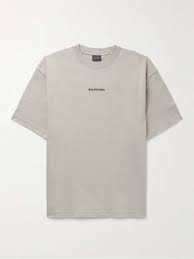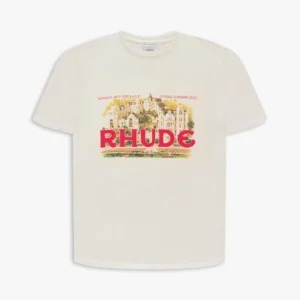Balenciaga is more than just a luxury fashion house; it’s a brand that has consistently pushed the boundaries of design, often challenging conventional aesthetics. Behind the scenes, the creative process at Balenciaga is a fascinating blend of innovation, history, and cultural influences. The brand has become iconic for its bold designs, especially its streetwear-inspired collections and high-fashion Balenciaga clothing.
In this article, we’ll take a closer look at the creative process behind Balenciaga, exploring the inspirations that shape their designs and how the brand continues to evolve while staying true to its roots.
The Vision of Demna Gvasalia
When discussing the modern success of Balenciaga, it’s impossible to ignore the contribution of its creative director, Demna Gvasalia. Since his appointment in 2015, Demna has brought a fresh perspective to the brand. Known for his avant-garde designs and ability to merge luxury fashion with streetwear elements, Demna has transformed Balenciaga clothing into something both daring and commercially successful.
Demna’s creative process is rooted in the idea of deconstruction and reconstruction. He is constantly breaking down traditional forms and reimagining them in a new, sometimes provocative, context. This can be seen in Balenciaga’s oversized coats, distorted proportions, and unique takes on everyday items like hoodies, sneakers, and bags.
Inspiration from the Streets
One of the key inspirations for Balenciaga clothing under Demna’s leadership is street culture. The brand has successfully combined the gritty, real-world aesthetics of urban life with the high-end craftsmanship of luxury fashion. The rise of streetwear as a dominant force in the fashion industry aligns perfectly with Balenciaga’s focus on comfort, wearability, and individuality.
Street style is about more than just clothing; it’s about how people express themselves in their everyday lives. By tapping into this authentic form of self-expression, Balenciaga has made high fashion more accessible and relatable. The brand’s Balenciaga tracksuits, sneakers, and graphic tees reflect this connection, blurring the lines between haute couture and everyday wear.
Subverting Traditional Fashion Norms
Another hallmark of Balenciaga’s creative process is its ability to subvert traditional fashion norms. Demna often plays with the concept of beauty and ugliness, using unconventional shapes, materials, and colors to challenge perceptions of what is fashionable. This subversion is a deliberate move to provoke thought and spark conversation about the very nature of fashion and aesthetics.
For instance, the brand’s infamous “ugly” sneakers, such as the Balenciaga Triple S, took the fashion world by storm by embracing bulkier, more utilitarian designs at a time when sleek, minimalist footwear was the trend. This bold move exemplifies Balenciaga’s willingness to go against the grain and redefine fashion on its terms.
A Tribute to Balenciaga’s Heritage
While Demna has undoubtedly revolutionized Balenciaga clothing with his forward-thinking approach, he also pays homage to the brand’s rich history. Founded by Spanish designer Cristóbal Balenciaga in 1917, the house of Balenciaga has a legacy of innovation that spans over a century. Cristóbal himself was known for his architectural approach to fashion, focusing on structure, volume, and form.
Demna draws inspiration from Cristóbal’s work, often incorporating classic Balenciaga silhouettes into his modern collections. The dramatic shapes of Cristóbal’s designs, such as the cocoon coat and sack dress, continue to influence the brand’s current collections. This blend of historical references and contemporary design ensures that Balenciaga remains timeless while also pushing fashion forward.
The Use of Technology in the Design Process
In recent years, technology has played a significant role in the evolution of Balenciaga clothing. Demna is a big proponent of using advanced digital techniques in his creative process. For example, 3D printing, computer-aided design (CAD), and virtual reality are now integral parts of how garments are designed and tested before going into production.
Technology allows for precision in the creation of complex shapes and patterns that would be difficult to achieve through traditional methods alone. It also offers a more sustainable approach to fashion by minimizing waste and allowing for virtual fitting, which reduces the need for excessive samples. This tech-driven approach aligns with Balenciaga’s forward-thinking ethos and commitment to innovation.
Cultural and Social Influences
Balenciaga is a brand that does not shy away from engaging with the world around it. Social and cultural influences are central to the creative process at Balenciaga. The brand frequently references current events, political climates, and social movements in its collections. Demna often uses fashion as a form of commentary, whether it’s through slogans, graphics, or the symbolism of certain garments.
For instance, Balenciaga’s Fall/Winter 2020 collection featured a dystopian runway submerged in water, which many interpreted as a commentary on climate change. The brand’s Balenciaga clothing frequently incorporates elements that reflect the anxieties and concerns of the modern world, making it more than just fashion—it becomes a medium for storytelling and reflection on society.
Collaboration and Creative Exchange
Collaborations are another vital aspect of Balenciaga’s creative process. The brand has partnered with a wide range of artists, designers, and brands to create unique and innovative collections. From collaborating with Yeezy on footwear to teaming up with Crocs for a high-fashion twist on the iconic foam clog, Balenciaga is not afraid to explore unexpected creative exchanges.
These collaborations allow Balenciaga to stay fresh and continually appeal to new audiences. By working with brands and individuals from different creative backgrounds, Balenciaga expands its design vocabulary and introduces new perspectives to its already diverse range of Balenciaga clothing.
Sustainability in the Creative Process
Sustainability has become a major concern in the fashion industry, and Balenciaga is no exception. As part of its creative process, the brand is increasingly focused on producing environmentally responsible Balenciaga clothing. This includes the use of recycled materials, minimizing waste, and adopting more sustainable production methods.
Demna has expressed his commitment to reducing the brand’s environmental impact, which is reflected in the design and production of many recent collections. Sustainable fashion is not just a trend for Balenciaga; it’s a long-term goal that aligns with the brand’s innovative and forward-thinking philosophy.
The Role of Balenciaga’s Creative Team
Behind every iconic Balenciaga collection is a team of highly skilled designers, artisans, and craftspeople who bring the creative vision to life. While Demna Gvasalia is the creative leader, the collective effort of the entire team plays a crucial role in shaping the final products.
Balenciaga’s design team works closely with fabric developers, pattern makers, and manufacturers to ensure that every piece of Balenciaga clothing meets the highest standards of quality and craftsmanship. The collaborative environment at Balenciaga allows for the cross-pollination of ideas, resulting in collections that are innovative, cohesive, and expertly crafted.
Balenciaga’s Future: Innovation and Tradition Combined
Balenciaga’s ability to balance tradition with innovation is key to its continued success. As the fashion landscape evolves, so does Balenciaga clothing. The brand’s focus on innovation, technology, and sustainability ensures that it remains at the cutting edge of fashion, while its respect for its heritage keeps it grounded in its iconic legacy.
Demna’s bold vision and ability to challenge the status quo have cemented Balenciaga’s place as one of the most influential fashion houses in the world. Whether it’s through subverting traditional designs, embracing street culture, or pushing the boundaries of what fashion can be, Balenciaga continues to lead the way.
Conclusion
Balenciaga’s creative process is a dynamic fusion of innovation, tradition, and cultural relevance. From Demna Gvasalia’s visionary leadership to the brand’s commitment to sustainability and technology, Balenciaga clothing represents more than just fashion—it’s a statement of where fashion has been and where it is going. As Balenciaga continues to evolve, it remains at the forefront of modern fashion, redefining what luxury means in the 21st century.




